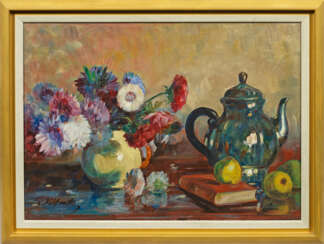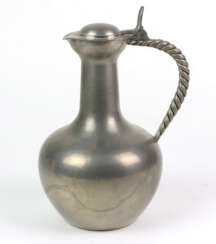kanne rad

Conrad Felixmüller was a twentieth-century German artist, born Conrad Felix Müller. He is known as a painter, graphic artist, illustrator and printmaker, a representative of the New Materiality movement, who worked in the Expressionist style.
Felixmüller created about 2,500 paintings and graphic drawings, the main motif of which was the human being. The artist considered himself a socially critical expressionist, and his works reflected scenes from everyday life. In the 1930s, many of his works were confiscated by the Nazis as examples of degenerate art and destroyed. As a result of the bombing of Berlin in 1944, Felixmüller lost much of his work.


Hermann Gradl was a German artist of the first half of the twentieth century. He is known as a painter, graphic artist, illustrator and teacher, professor of art.
Hermann Gradl took up painting at the age of 25. He was self-taught, learning from the works of the masters of the Old German and Dutch schools, as well as the romanticized realists of the 19th century. The artist created small- and medium-format idyllic landscapes, urban vistas, and genre scenes. The rise to power in Germany of the National Socialists strengthened Gradl's position, as his work conformed to the cultural policies of the Third Reich. Hitler celebrated him as the best contemporary German landscape painter.
In all, Gradl created more than 8,000 drawings, some 2,100 oil paintings and hundreds of illustrations during his career.


Konrad Klapheck is a German painter and graphic artist whose style of painting combines features of Surrealism and Pop art.


Franz Radziwill was a German artist of the twentieth century. He is known as a landscape painter, graphic artist and printmaker associated with the artistic movement of "new materiality".
Franz Radziwill created paintings that are characterized by careful elaboration and the use of glaze techniques borrowed from the Old Masters. He used elements of industrial buildings and modern technology, including ships and airplanes, in his landscapes. The results of his work can be categorized as magical realism.
In 1933 Radziwill became professor of painting at the Düsseldorf Academy of Art, but in 1935 the Nazis stripped him of this position, declaring his work degenerate art.



















































































